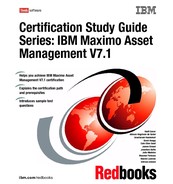Chapter 10. Other configuration options 201 – WF Initiate: Initiate a Workflow process. This option requires a value in the Parameter/ Attribute field. – WF Reject: Reject the record and route it to the negative path in the workflow process. Also known as workflow auto- reject. CHANGESTATUS This type specifies that the status of a record will change. The type requires a value in the Object field and status in the Value field. CUSTOM This type specifies that a custom class file should run. The type requires a value in the Object field and the name and path of a class file in the Value field. EXECUTABLE This type specifies that a program on the server should run. The type requires the name of a program file in the Value field. GROUP This type specifies that the system should run the sequence of actions that you specify in the Members table window. SETVALUE This type specifies that the system should set the value of a specified field. The type requires values in the Object, Value, and Parameter/ Attribute fields. 10.9 Roles You use the Roles application to create, modify, view, and delete role records that can be used as part of a communication template, escalation, SLA, or workflow process. When a role is used within a process, the system can determine the correct individual or individuals the process is routed to, based on information with the role record. A role is a function or position in a business. A role can represent a specific job title, for example, a department manager, or an assigned duty, for example, a watch officer. You may also use a role to represent a specific person or a group of people. Role settings can be used with: Communications templates Escalations Service level agreements ( SLA) Workflow processes
